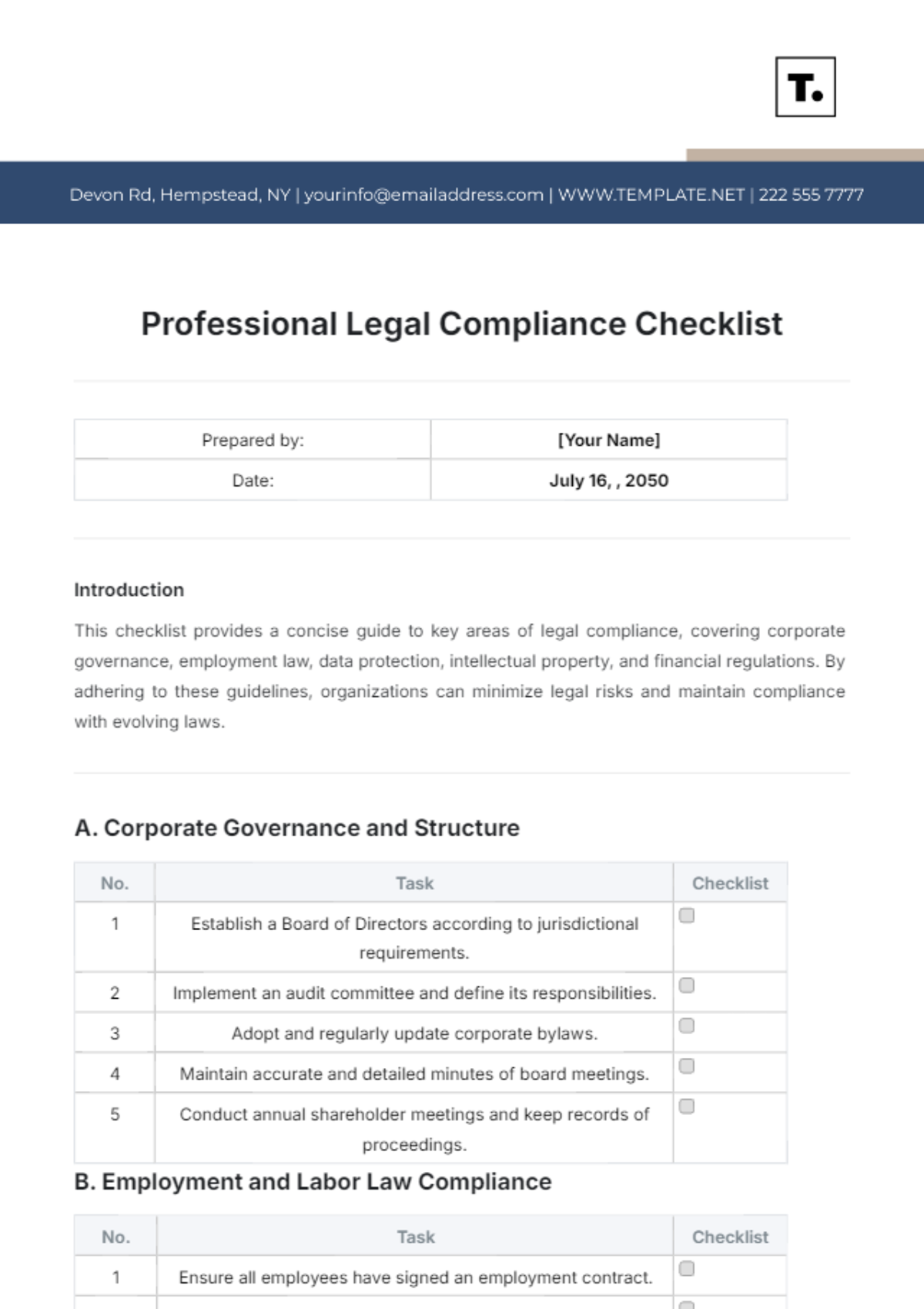Free EHS Compliance Checklist
Discover seamless compliance with the EHS Compliance Checklist Template from Template.net. Effortlessly tackle safety regulations with this editable and customizable tool, ensuring tailored solutions for your business needs. Edit with ease using our AI Editor Tool, empowering you to streamline your compliance processes effortlessly.






























